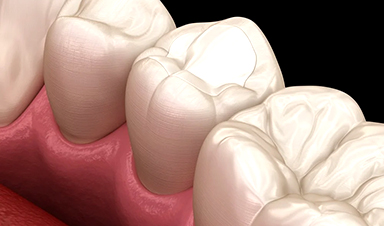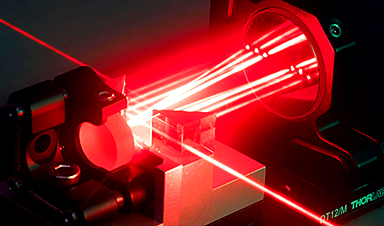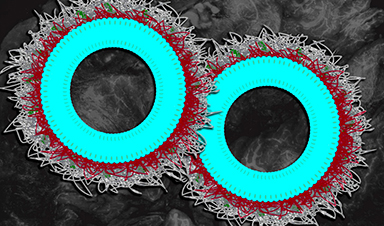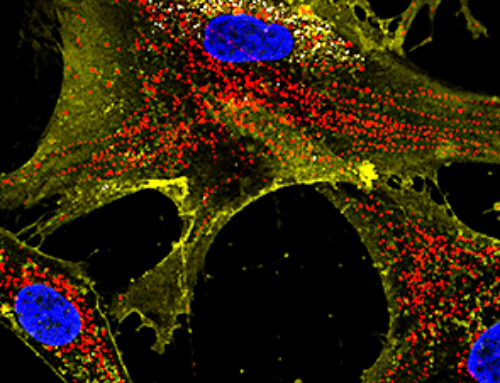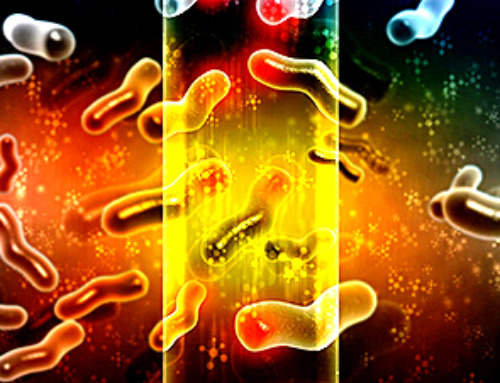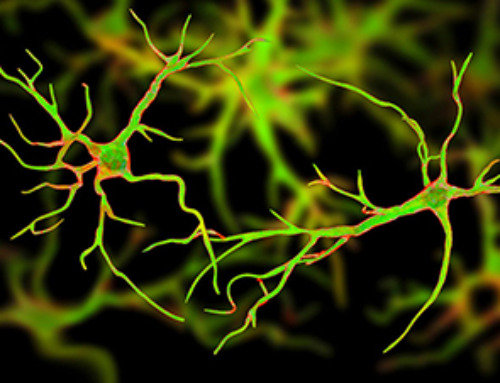Methacrylate-based materials are often used in bone cement and dental resins. However, they have high failure rates as they undergo damage within ten years, impacting the quality of patient’s life and increasing healthcare costs.
Although replacing methacrylate-based materials with self-healing resins and bone cement could increase lifespan, reduce costs, and enhance patient outcomes, the practical applicability of these materials is limited due to their low efficacy and toxicity. An article published in the journal ACS Omega addressed this issue by developing a dual nanocapsule-based self-healing system.
Two polyurethane (PU) shell-based nanocapsules were synthesized: an initiator capsule containing benzoyl peroxide and butylated hydroxytoluene and a monomer capsule containing triethylene glycol dimethacrylate.
Resins with these nanocapsules were tested under tension until failure, followed by assembling the fractured surfaces. 33% of samples showed self-healing behavior and could be reloaded for testing under tension. The capsules and their components were biocompatible with Caco-2 cell lines, suggesting in vivo tolerance of the prepared nanocapsules.
Nanocapsules as Self-Healing Materials
Self-healing materials, when damaged through thermal, mechanical, and ballistic effects can heal and restore materials to their original properties. Few materials intrinsically possess this self-healing ability, which is a valuable characteristic in designing systems since it effectively expands the lifetime use of the product and has desirable economic and human safety attributes.
These self-healing materials could be useful in methacrylate-based systems, including dental resins and bone cement. Aseptic loosening of bone cement by forming cracks may trigger inflammation and bone resorption, requiring expensive surgical intervention. Although modern dental resins prevent any effects on the environment and health with mercury, their poor durability causing implant damage within ten years, has increased the cost of dental care.
Nanocapsules are hollow sphere structures with submicrometer dimensions. Such nanocapsules can accommodate large quantities of guest molecules within their empty core domain. These materials could be helpful in applications in the fields of biological chemistry, synthesis, and catalysis.
Polymeric nanocapsules with a multitude of applications have already been proposed, such as confined reaction vessels, drug carriers, protective shells for cells or enzymes, transfection vectors in gene therapy, carrier systems in heterogeneous catalysis, dye dispersants, or as materials for removal of contaminated waste.
Methacrylate-based nanocapsules are easy to implement for self-healing properties in both dental resins and bone cement due to their filler particles that enhance the material’s mechanical properties. Initially, the nanocapsules simply act as an additional filler. However, when a crack propagates through the material, it breaks and releases components into the crack through capillary action that polymerizes later to heal the matrix.
Biocompatible Nanocapsules with Self-Healing Capacity
Nanocapsules were hypothesized to undergo a robust self-healing process with less impact on the mechanical properties than larger particles. Thus, the present work aimed to investigate single and dual nanocapsule systems based on PU and nontoxic components.
The impact of the prepared single and dual nanocapsules on the self-healing process of methacrylate resins was determined by synthesizing PU nanocapsules, which encapsulate either the initiator or monomer. Furthermore, the mechanical testing and biocompatibility analysis determined the system’s feasibility as a self-healing additive for bone cement and dental resins.
The monomer used here was TEGDMA, with a long shelf-life and quick polymerization capability. The healing liquid was expected to have low viscosity to flow through cracks of resin and fill it. Hence, TEGDMA was previously used as a dental monomer.
Here, using butylated hydroxytoluene (BHT) along with benzyl peroxide (BPO) prevented the formation of free radicals before their release from the capsule. Thus, the initiator component based on BPO and BHT increased the stability of the dual-capsule-based self-healing system.
The fracturing of nanocapsules was an important finding of the present work since their rupture was the basis for the self-healing process. While a too-thick shell did not allow the capsule to rupture, a too-thin shell resulted in fragile nanocapsules.
Conclusion
Overall, PU nanocapsule encapsulating TEGDMA monomer was embedded into an epoxy resin. These embedded resins were compared with their blank counterparts to determine the effects of monomer nanocapsules on the resin’s mechanical properties.
Comparing the elastic modulus, yield stress, ultimate tensile stress, and strain to fracture indicated that the resin without monomer capsules was stronger than the resin with monomer capsules. The monomer nanocapsules cracked during the resin fracture, proving the self-healing effect of the nanocapsules in resins.
Moreover, premature cracking of resins in the gastrointestinal tract did not cause any detrimental effects on the patient, suggesting the biocompatibility of the developed self-healing system. Furthermore, a small degree of self-healing capacity was observed in the resins with monomer nanocapsules, unencapsulated BPO, and the resins with monomer nanocapsules, and initiator capsules.
Multifunctional Nanogels: A Breakthrough in Antibacterial Strategies
Antibiotic resistance is a growing concern - from human health to crop survival. A new study successfully uses nanogels to target and almost entirely inhibit the bacteria P. Aeruginosa. Recently published in Angewandte Chemie, the study [...]
Nanoflowers rejuvenate old and damaged human cells by replacing their mitochondria
Biomedical researchers at Texas A&M University may have discovered a way to stop or even reverse the decline of cellular energy production—a finding that could have revolutionary effects across medicine. Dr. Akhilesh K. Gaharwar [...]
The Stunning New Push to Protect the Invisible 99% of Life
Scientists worldwide have joined forces to build the first-ever roadmap for conserving Earth’s vast invisible majority—microbes. Their new IUCN Specialist Group reframes conservation by elevating microbial life to the same urgency as plants and [...]
Scientists Find a Way to Help the Brain Clear Alzheimer’s Plaques Naturally
Scientists have discovered that the brain may have a built-in way to fight Alzheimer’s. By activating a protein called Sox9, researchers were able to switch on star-shaped brain cells known as astrocytes and turn them into [...]
Vision can be rebooted in adults with amblyopia, study suggests
Temporarily anesthetizing the retina briefly reverts the activity of the visual system to that observed in early development and enables growth of responses to the amblyopic eye, new research shows. In the common vision [...]
Ultrasound-activated Nanoparticles Kill Liver Cancer and Activate Immune System
A new ultrasound-guided nanotherapy wipes out liver tumors while training the immune system to keep them from coming back. The study, published in Nano Today, introduces a biodegradable nanoparticle system that combines sonodynamic therapy and cell [...]
Magnetic nanoparticles that successfully navigate complex blood vessels may be ready for clinical trials
Every year, 12 million people worldwide suffer a stroke; many die or are permanently impaired. Currently, drugs are administered to dissolve the thrombus that blocks the blood vessel. These drugs spread throughout the entire [...]
Reviving Exhausted T Cells Sparks Powerful Cancer Tumor Elimination
Scientists have discovered how tumors secretly drain the energy from T cells—the immune system’s main cancer fighters—and how blocking that process can bring them back to life. The team found that cancer cells use [...]
Very low LDL-cholesterol correlates to fewer heart problems after stroke
Brigham and Women's Hospital's TIMI Study Group reports that in patients with prior ischemic stroke, very low achieved LDL-cholesterol correlated with fewer major adverse cardiovascular events and fewer recurrent strokes, without an apparent increase [...]
“Great Unified Microscope” Reveals Hidden Micro and Nano Worlds Inside Living Cells
University of Tokyo researchers have created a powerful new microscope that captures both forward- and back-scattered light at once, letting scientists see everything from large cell structures to tiny nanoscale particles in a single shot. Researchers [...]
Breakthrough Alzheimer’s Drug Has a Hidden Problem
Researchers in Japan found that although the Alzheimer’s drug lecanemab successfully removes amyloid plaques from the brain, it does not restore the brain’s waste-clearing system within the first few months of treatment. The study suggests that [...]
Concerning New Research Reveals Colon Cancer Is Skyrocketing in Adults Under 50
Colorectal cancer is striking younger adults at alarming rates, driven by lifestyle and genetic factors. Colorectal cancer (CRC) develops when abnormal cells grow uncontrollably in the colon or rectum, forming tumors that can eventually [...]
Scientists Discover a Natural, Non-Addictive Way To Block Pain That Could Replace Opioids
Scientists have discovered that the body can naturally dull pain through its own localized “benzodiazepine-like” peptides. A groundbreaking study led by a University of Leeds scientist has unveiled new insights into how the body manages pain, [...]
GLP-1 Drugs Like Ozempic Work, but New Research Reveals a Major Catch
Three new Cochrane reviews find evidence that GLP-1 drugs lead to clinically meaningful weight loss, though industry-funded studies raise concerns. Three new reviews from Cochrane have found that GLP-1 medications can lead to significant [...]
How a Palm-Sized Laser Could Change Medicine and Manufacturing
Researchers have developed an innovative and versatile system designed for a new generation of short-pulse lasers. Lasers that produce extremely short bursts of light are known for their remarkable precision, making them indispensable tools [...]
New nanoparticles stimulate the immune system to attack ovarian tumors
Cancer immunotherapy, which uses drugs that stimulate the body’s immune cells to attack tumors, is a promising approach to treating many types of cancer. However, it doesn’t work well for some tumors, including ovarian [...]
